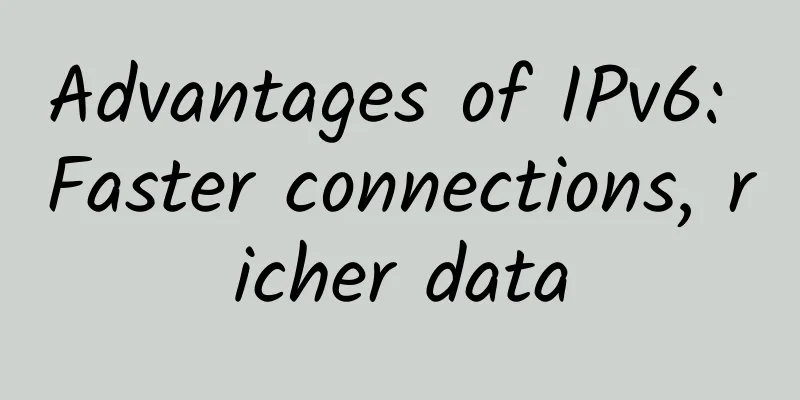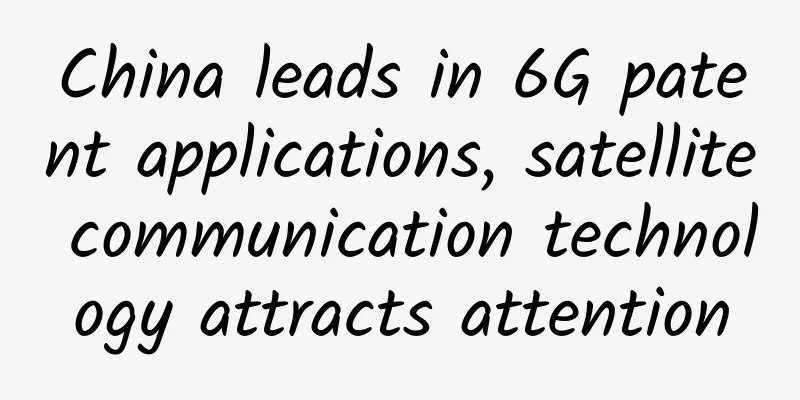Edge computing has great potential if we play the game of alliance ecology well

|
To be honest, when I first heard the words "edge computing", I was completely confused. We are all familiar with computing, whether it is cloud computing or high-performance computing, they are concepts that have been spread for a long time. But what is "edge computing"? From what perspective should this "edge" be understood? What is the difference between this computing and other computing? In a flash, these series of questions flew through my mind. I believe many people have similar ideas when they hear this name. Although the concept of "edge computing" has been around for some years, it has not really taken off for long. In essence, it is the development of the Industrial Internet or the Industrial Internet of Things that has brought this concept into the public eye. When promoting this concept, the Edge Computing Consortium (ECC) is the best choice. Edge computing's beautiful "annual report" At the end of November last year, the Edge Computing Industry Alliance was officially established in Beijing. The alliance was founded by six units including Huawei Technologies Co., Ltd., Shenyang Institute of Automation, Chinese Academy of Sciences, China Academy of Information and Communications Technology, Intel Corporation, ARM and iSoftStone Information Technology (Group) Co., Ltd., and is committed to promoting the cooperation of industrial resources among all parties of "government, industry, academia, research and application" and leading the healthy and sustainable development of the edge computing industry. Today, ECC has been around for nearly a year, and its team is growing. At present, the number of ECC members has reached 136 (as of October 2017), including more than 20 well-known companies such as Intel, ARM, Honeywell, Mitsubishi, Bosch, Schneider, etc. This also proves from the side that the concept of ECC has been widely recognized by major companies at home and abroad. What follows is the continuous improvement of ECC's ecosystem. At present, ECC has established official cooperation with multiple industry organizations such as IIC/AII/SDNFV/LNI4.0, and has also officially participated in the edge computing related standards work of multiple standard organizations such as IEEE/IEC/IETF to ensure interconnection and open innovation, and create unified architecture standards and specifications. Figure 1: The first ECF will be held in Berlin, Germany on November 7 At the beginning of next month, on November 7, ECC will also co-organize the Edge Computing Forum (ECF) conference with Fraunhofer (FOKUS), Europe's largest applied scientific research institution. This is also the first edge computing summit in Europe. It is reported that this conference will invite experts from the industry's top manufacturers, organizations and research institutions to discuss how to deal with the opportunities and challenges facing the development of the edge computing industry around five major topics, including CROSS (Connectivity, Real-Time, Data Optimization, Smart and Security). At that time, Liu Shaowei, Vice Chairman of the Edge Computing Alliance and President of Huawei Network R&D Department, will also give a keynote speech entitled "Edge Computing - Helping the Industry's Digital Transformation and Building a Win-Win Open Ecosystem". This time, it was Europe that chose edge computing I believe many people will have expectations for this conference. Of course, some people may ask this question - why is edge computing so closely related to Europe? In fact, this question is very simple: it is not that edge computing chose Europe, but Europe chose edge computing. If one country is used to represent Europe, many people may choose Germany. Indeed, Germany not only has a long history and splendid culture, but also has strong industrial capabilities, and also represents the top level of Europe in the field of technology. As early as a few years ago, the German government proposed the concept of "Industry 4.0" in the "Germany 2020 High-Tech Strategy", which refers to the use of the Internet of Things information system to digitize and intelligentize the supply, manufacturing, and sales information in production, and finally achieve fast, effective, and personalized product supply. I have been to Germany several times for conference reporting. I was deeply impressed by the meticulousness, rigor and meticulousness of the Germans. Even for some daily trivial matters, they will complete them according to strict regulations. As time enters the era of the fourth revolution, when we turn from industrial applications to IT applications and then to data applications, we increasingly find that the connection and interconnection between things have surpassed the traditional concept. This is not just the original single ICT or OT, but rather presents a trend of integration. What we commonly call the Internet of Things is the most important expression of this change. It is precisely with the help of the Internet of Things that the traditional physical world and the virtual world are connected and integrated. Today, we can achieve the original industrial control through digital devices, making digital transformation the development direction of traditional enterprises. And in terms of industrial applications, this change is precisely the core content of Industry 4.0. As we all know, edge computing is closely related to industrial control systems. An industrial control system with an industrial Internet interface is essentially an edge computing device that solves the contradiction between the high real-time requirements of industrial control and the uncertainty of Internet service quality. In the past, we were already very familiar with cloud computing, and edge computing is more like a supplement and development of cloud computing. It can function independently or in collaboration with the cloud. The two cannot replace each other. In other words, edge computing is close to the concept of distributed autonomy in industry. In a heterogeneous distributed computing environment based on the Internet, it combines centralization and decentralization, which not only effectively utilizes Internet resources, but also ensures the autonomy, security and robustness of the user system. As for applications, edge computing has rich industry application scenarios and outstanding industrial value. On the one hand, it supports the innovation of industry business models and realizes the extension of value from products to services; on the other hand, it supports the customization and intelligence of products and services. Predictive maintenance, energy efficiency management, and intelligent manufacturing are relatively typical industry application scenarios. Figure 2: The ECC test bed has covered multiple industries such as power capacity, transportation, industrial manufacturing, and smart cities Today, ECC is making rapid progress in commercial test beds and has completed the application, review and execution of the first batch of 11 test beds. Taking the industrial robot predictive maintenance test bed as an example, the experimental platform collects, analyzes and processes the operating data of industrial robots, and the system realizes final state perception, real-time analysis, fault diagnosis, and predictive maintenance, thereby improving robot reliability, reducing downtime, improving production efficiency, and timely warning, and improving after-sales service response efficiency. ECC's test bed has fully verified that edge computing and its related technologies have actual commercial value in multiple industries such as manufacturing. Germany is the birthplace of Industry 4.0, a pioneer in digital transformation, and a user of edge computing. Of course, the choice of Germany is also closely related to Huawei's many successful cases in Germany and its long-term and good cooperative relationship with Fraunhofer. How does ECC use ecology to predict the future of edge computing? Industrial or manufacturing applications are just a typical example of edge computing. In other industries, with the advantages of computing and networking, ECC is also extending intelligence and automation to various fields. For example, in the field of smart buildings, Huawei and Honeywell have jointly launched the industry's first smart building solution based on edge computing.
Figure 3: Huawei and Honeywell jointly launched the industry's first smart building solution based on edge computing The solution consists of IoT gateways, network and device management platforms: agile controllers, middleware technology platform Niagara Framework, and various sensor control devices and application systems from partners. It realizes the connection and intercommunication between complex and diverse control devices in buildings, unified cloud management, and distributed deployment and elastic expansion of building management, which improves work efficiency and provides customers with a more "efficient, green, and comfortable" building environment. In the field of elevator networking (Internet elevator), Huawei also announced its cooperation with GE in April this year. The two parties integrated the Edge Computing IoT (EC-IoT) solution and GE's industrial Internet cloud platform Predix to quickly achieve end-to-end interconnection from industrial equipment to cloud applications, real-time monitoring of equipment status, data analysis and insight, and intelligent maintenance decision-making, helping manufacturers reduce maintenance costs, prevent unplanned equipment downtime, and drive product and service innovation. Figure 4: Huawei and GE jointly release an industrial predictive maintenance solution based on the industrial cloud In the transportation industry, ECC will provide a lot of technical support for the transportation field, and work with many partners in the industry to develop and improve standards based on a large number of practical cases. I believe that in the future, the alliance will bring more technological breakthroughs to the field of "edge computing" in intelligent transportation, achieve the development of more standards, and effectively improve our daily transportation life. … It should be said that cooperation with Europe is just the beginning and the first step for ECC to go international. As a platform dedicated to industrial collaboration and accelerating the digital innovation and industrial application of edge computing in various industries, ECC is an international industry-university-research cooperation platform. In addition to relying on Germany's Industry 4.0 and Made in China 2025, ECC will also have research institutions, industrial organizations, manufacturers from various regions (including the United States, Japan, etc.) and various industrial fields join in the future to jointly promote the vigorous development of edge computing. From Gartner's inclusion of edge computing in the Hyper Cycle in 2015, to IDC Asia Pacific executives delivering a speech on edge computing last month, to Forrester and 451 Research's optimism about edge computing, it can be said that major consulting companies in the entire ICT industry have paid great attention to edge computing in 2017, which is naturally inseparable from ECC's vigorous promotion. This is just as Liu Shaowei, Vice Chairman of the Edge Computing Alliance and President of Huawei Network R&D, said: "The Edge Computing Alliance is committed to enabling members to succeed in business, improving solution competitiveness, and strengthening industry influence." At the upcoming Edge Computing Forum 2017, Huawei and Fraunhofer FOKUS Institute will also uphold this spirit to promote the further implementation of edge computing. See you on November 7th in Berlin. |
<<: The evolution of the Internet, the inevitability of blockchain
>>: How difficult it is to increase network speed and reduce fees
Recommend
Let's talk about WiFi6 security technology
1. WiFi6 Overview In 2018, in order to better bui...
Don’t let digital experience get in the way of your business strategy
Do you remember the last time you expressed your ...
Huawei Cloud Online Education Innovation Season kicks off to light up the dream classroom with technology
[51CTO.com original article] Is it a crisis or an...
China Mobile releases February operating data: 5G customer number reaches 168,971
China Mobile announced its operating data for Feb...
HostKvm Hong Kong B Zone 40% off, $5.1/month KVM-2G memory/40G hard disk/1Gbps bandwidth
HostKvm is a Hong Kong VPS provider founded in 20...
RAKsmart: US CN2 line VPS monthly payment starts from $0.99, Japan/Hong Kong VPS monthly payment starts from $2.99
The day before yesterday, we shared the news of R...
Communication module, why is it so popular?
In recent years, with the rise of mobile communic...
edgeNAT newly launched VPS in Los Angeles with 40% off monthly payment and 50% off annual payment, US/Hong Kong/Korea data centers
edgeNAT recently opened a new cabinet in the Core...
In fact, IPv6 is not so perfect
Everything has its two sides, and technology is n...
How to enable owners and facility managers to realize smart buildings
Building owners and facility managers are turning...
Will 5G be the connectivity miracle for the Internet of Things?
Thanks to 5G, high-speed internet will soon be av...
ProfitServer has opened 4 new data centers in Hong Kong, starting from $5.77 per month for 100M unlimited traffic
ProfitServer sent a new email a few days ago, say...
Markets and Markets: 5G enterprise market size will reach US$10.9 billion in 2027
According to the latest market research report re...
Everything You Should Know About SFP Modules
In today's network environment, many users ar...
How to configure floating routing?
[[416937]] Experimental requirements ISP-1 and IS...









